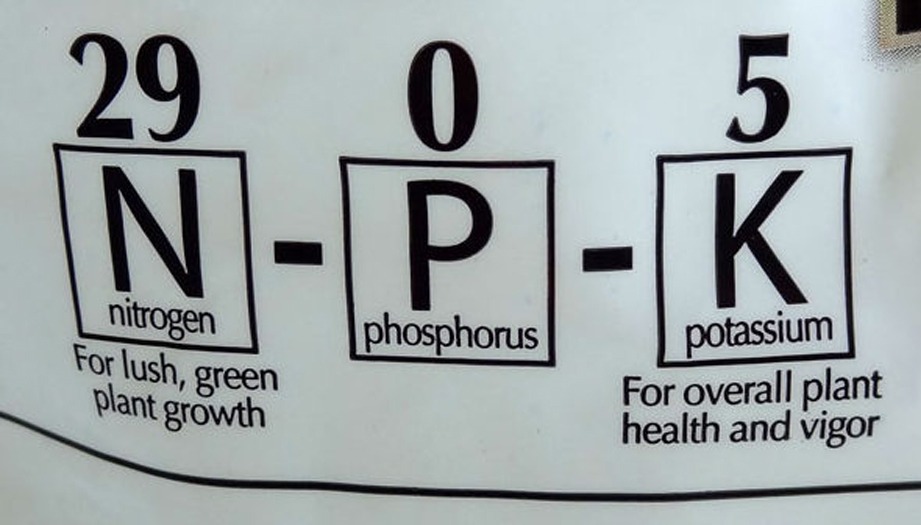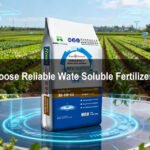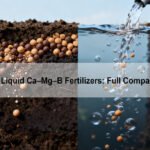If you’re unfamiliar with the science behind fertilizers, you might be wondering, what does that trio of numbers on the fertilizer bag mean? The simplest explanation is that fertilizers are plant food. But when you walk into a plant store, greenhouse, or hardware store, it quickly becomes apparent that it’s not that simple. There will be a whole section teeming with different fertilizer options. Often it’s easiest to grab whichever one has the name of the plant you’re trying to feed, like tomato, or evergreen, or bloom fertilizer.
Generally, it’s not a bad thing to pick up a fertilizer designed for the plant you want to feed. Plant-specific fertilizers have more of the targeted nutrients those plants generally need. However, getting a rose-specific fertilizer doesn’t mean your roses will forever be full of perfect blooms.
Knowing a little more in-depth info about fertilizers can help you pick out the option that allows you to get precisely what you want from your plant, whether that’s lots of fruit, flowers, or leaves, and help keep your plants healthy and thriving.
What Does NPK Stand for on Fertilizer Bags?
All fertilizers have different crucial nutrients that plants need to grow. The three essential nutrients are Nitrogen (N), Phosphorus (P), and Potassium (K). The initial for each of these nutrients on the periodic table, NPK, is used on most labels.
These three nutrients are essential for all plants to grow. Ideally, they would get these nutrients from the soil they’re growing in, but sometimes we need to help them out a little. The different nutrients are essential for certain aspects of plant growth.
Generally speaking:
- Nitrogen promotes lush leaves
- Phosphorus promotes root growth and blooming
- Potassium promotes all-around plant health
- Mono Ammonium Phosphate Map Fertilizer 11-44 -0 Granular
What Do the Fertilizer Numbers on the Packaging Mean?
The NPK numbers on fertilizer indicate the ratio of each element included in the fertilizer. So a fertilizer that has the same number for all three elements, like 20-20-20, is called a balanced fertilizer and will have equal amounts of nitrogen, phosphorus, and potassium.
A fertilizer with unique numbers for the three elements will have different amounts of each nutrient. For example, a 15-15-15 fertilizer will have one part nitrogen, two parts phosphorus, and one part potassium.
What Is Low or High-Analysis Fertilizer?
Fertilizers are also low or high-grade based on the analysis of their nutrient levels. Small NPK numbers on the fertilizer bag, like 1-1-1, mean it’s a low analysis. High NPK numbers, 10-10-10 or above, mean it’s a high-analysis.
Generally, if the NPK numbers added together equal less than 30, i.e., less than 30% of the total volume of the bag, it’s a low analysis fertilizer. If it’s higher than 30, it’s high-analysis; this means that percentage, higher or lower than 30%, is the total available nutrients in the package.
The grades make it possible for you to calculate which and how much fertilizer you will need to apply. It can get into some complex math, and there are lots of examples online if you want to research it further.
In general, high-analysis fertilizer will have more nutrients in the package than low-analysis fertilizer. Low-analysis fertilizer will have less available nutrients and more filler, but that doesn’t mean it’s less valuable. It makes low-analysis fertilizer a little easier to use, and you can generally use it more frequently.
Filler in fertilizer is essential. If you use crystalized or concentrated liquid fertilizer mixed into water, the filler is water. In a granulated fertilizer, the filler could be something like sand. The filler is essential because it helps keep the bits of nutrients evenly distributed, so it applies evenly over the area you need to fertilize.
In general, high-analysis fertilizers have higher concentrations of the nutrient elements. If you’re using high-analysis fertilizers, be very careful when applying them. The larger amounts of nutrients mean there’s a chance that exposure to such levels of nutrients all at once could burn the roots of your plants. Regardless of whether you’re using low or high-analysis fertilizer, read the instructions carefully before applying it.
What Are Micronutrients in Fertilizer?
On some fertilizer packaging, usually organic ones, you may notice mention of micronutrients; this means other natural elements like boron, chlorine, copper, iron, manganese, molybdenum, and zinc included in the fertilizer mix in trace amounts. These elements are essential to keep plants thriving, and they also help plants use nutrients efficiently, create stronger cells, regulate hormones, or resist diseases.
Micronutrient amounts in fertilizer are small enough that they’re difficult to measure. That doesn’t mean they’re irrelevant. They’re still essential for growth but low enough that they don’t need to be or can’t be measured.








